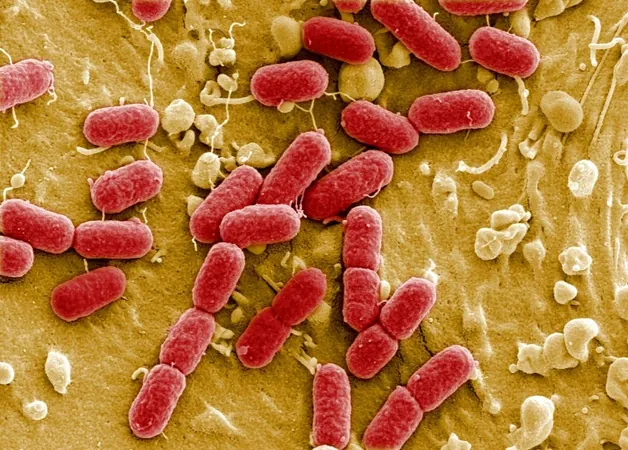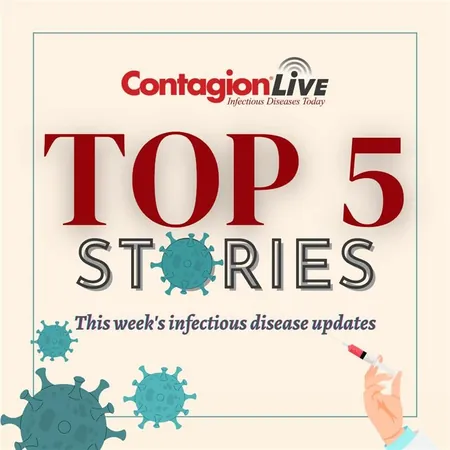
Are Drug-Resistant Superbugs the Next Global Health Catastrophe? Be Prepared for a Shocking Projection!
2024-09-17
In a chilling forecast, a groundbreaking global analysis has revealed that nearly **40 million lives** could be lost to drug-resistant superbugs within the next 25 years if urgent action is not taken. This urgent warning comes from researchers who emphasize the importance of addressing antimicrobial resistance (AMR) — a growing menace that threatens the very foundations of modern medicine.
Superbugs, which are bacteria or pathogens that have evolved to resist conventional antibiotics, pose an increasing threat to global health. The recent study, published in The Lancet journal, is the first of its kind to track the escalating impact of these resistant strains and predict their grim trajectory.
The Alarming Statistics
From 1990 to 2021, more than **one million deaths per year** were attributed to superbugs across the globe. Intriguingly, deaths among children under the age of five from AMR have dropped by over **50%** thanks to improved infection control practices. However, this is overshadowed by a more than **80%** rise in deaths among individuals aged 70 and above during the same period, indicating that our aging population is becoming increasingly susceptible to these infections.
Notably, the infamous MRSA, a stubborn type of staph bacteria resistant to many antibiotics, has seen its death toll **double** to **130,000** in 2021 compared to three decades prior. Researchers utilized advanced modeling techniques to estimate that, unless current trends change, deaths from AMR could surge by **67%**, potentially reaching **2 million** annually by 2050. Furthermore, AMR could contribute to an astounding **169 million deaths** over the next quarter-century, raising alarm bells worldwide.
A Fork in the Road
However, not all is lost. The researchers propose that if global efforts to enhance the treatment of severe infections and increase access to effective antimicrobial drugs are prioritized, we could potentially avert **92 million deaths** by 2050. This revelation underlines the critical need for proactive measures in combating AMR.
The study scrutinized **22 pathogens**, **84 drug-pathogen combinations**, and **11 infectious syndromes**, drawing data from an extensive **520 million individual records** across **204 countries**. This comprehensive approach sheds light on the formidable challenge that AMR presents and underscores the urgency of addressing it.
**Mohsen Naghavi**, a co-author of the study from the Institute of Health Metrics, remarked on the significance of these findings, reinforcing that AMR has been a persistent threat for decades and that its danger is only increasing. **Jeremy Knox**, head of infectious disease policy at the UK-based Wellcome Trust, cautioned that a rising burden of AMR could undermine the very fabric of modern healthcare. He emphasized that the antibiotics we take for granted — key to safeguarding countless medical interventions — might no longer be effective if swift action isn’t undertaken.
A Wake-Up Call for the Global Community
Despite rising political recognition of AMR over the last decade, experts warn that governments worldwide still need to respond more decisively and urgently. The anticipated high-level meeting on AMR at the United Nations on September 26 will be a crucial moment for international leaders to rally against this escalating threat.
Added to this grim narrative is the fact that while antimicrobial resistance is a naturally occurring phenomenon, human practices, including the **overuse and misuse** of antibiotics in humans, agriculture, and livestock, have dramatically exacerbated the situation.
In conclusion, unless we collectively rise to the occasion and combat the insidious rise of drug-resistant superbugs, the consequences could be catastrophic for global health, with millions of lives hanging in the balance. **Are we ready to face the consequences?** Only time will tell.




 Brasil (PT)
Brasil (PT)
 Canada (EN)
Canada (EN)
 Chile (ES)
Chile (ES)
 España (ES)
España (ES)
 France (FR)
France (FR)
 Hong Kong (EN)
Hong Kong (EN)
 Italia (IT)
Italia (IT)
 日本 (JA)
日本 (JA)
 Magyarország (HU)
Magyarország (HU)
 Norge (NO)
Norge (NO)
 Polska (PL)
Polska (PL)
 Schweiz (DE)
Schweiz (DE)
 Singapore (EN)
Singapore (EN)
 Sverige (SV)
Sverige (SV)
 Suomi (FI)
Suomi (FI)
 Türkiye (TR)
Türkiye (TR)